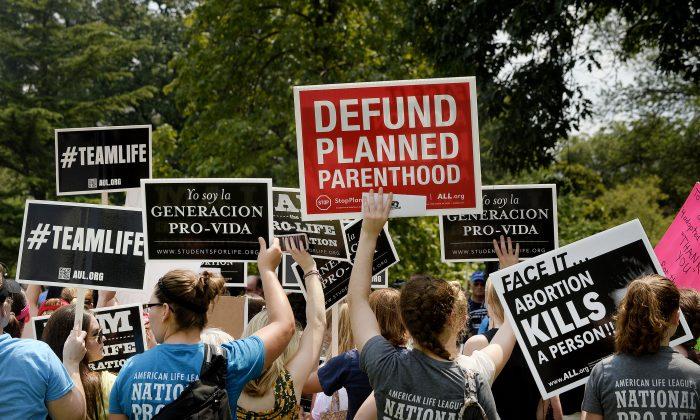As usual, the numbers tell a different story.
Let’s just take Planned Parenthood’s revenue and expenses: Planned Parenthood received about $617 million in Medicaid and Title X reimbursements. If that was removed, according to this year’s report, it would show about $1 billion in revenue, but since expenses were $1.5 billion, they’d be short $500 million. If the ability to receive reimbursements via Medicaid were removed, Planned Parenthood would need to do what the rest of us ordinary folk do and adjust its budget accordingly.
Then there’s the pesky problem of abortions, how many Planned Parenthood does, and how much they cost, compared to everything else they do, which calls into question the organization’s accounting and reporting on everything else.
In 2019, Planned Parenthood claimed abortion services only made up 4 percent of their work. The year before, it was only 3 percent, all the way back to at least 2015, even though the number of abortions has steadily increased. (How can the percentage remain the same?)
After several paragraphs, the Post concluded: “The 3 percent figure that Planned Parenthood uses is misleading, comparing abortion services to every other service that it provides. The organization treats each service — pregnancy test, STD test, abortion, birth control — equally. Yet there are obvious difference between a surgical (or even medical) abortion, and offering a urine (or even blood) pregnancy test. These services are not all comparable in how much they cost or how extensive the service or procedure is.”
This kind of obfuscation in accounting and reporting makes me question the remainder of the reported numbers and percentages as it relates to “preventative” measures and Medicaid reimbursements. If they’re misleading about abortion, the topic Planned Parenthood opines about the most in their lobbying and public relations campaigns, who is to say they’re not misleading about taxpayer subsidies?
To add to the conundrum, Planned Parenthood is a nonprofit organization that consistently ends the year in the black. To put it another way: The organization that performs more abortions than any other in the country, even as abortion procedures are decreasing, makes a profit because it gets reimbursed from the government via Medicaid for providing things such as contraception, STI tests, and cancer screenings.
Sixty percent of Planned Parenthood’s expenses are for “medical services,” which include testing for STIs, contraception, and abortions. The first two are somewhat inexpensive, compared to abortions, which are more costly—and, of course, far more damaging. If Planned Parenthood had to spend their own money on “preventative care,” knowing they weren’t getting reimbursed, they may not have as much left over to lobby, invest in public relations, and perform abortions.
Since the GOP is neither able nor willing to exclude Planned Parenthood from being able to receive reimbursement via Medicaid for things such as birth control, via federal legislation, states should be able to opt out of allowing Planned Parenthood to get reimbursed for preventive care.
While progressives often make the case that cutting Medicaid funding to Planned Parenthood would leave low-income women with little recourse for contraceptives or STI testing and treatment, this isn’t the case: Either Planned Parenthood would be forced to reorganize their spending model, in a way that adversely affects their bottom line (but perhaps also limits their ability to abort babies), or other clinics—such as many pro-life clinics that exist nationwide—would rise to the challenge and aid those in need.
While Roe v. Wade is still upheld, and many women view abortion as a right, this doesn’t mean contraception, STI testing, and other reproductive health treatments are a right and that taxpayers should subsidize these things.
Planned Parenthood has managed to corner the market on this issue and finagled a way for taxpayers to cover contraception on their dime (via Medicaid), but so long as they’re profiting while doing so, I think it’s obvious this is not a right.
It’s a scam—and it needs to end.





